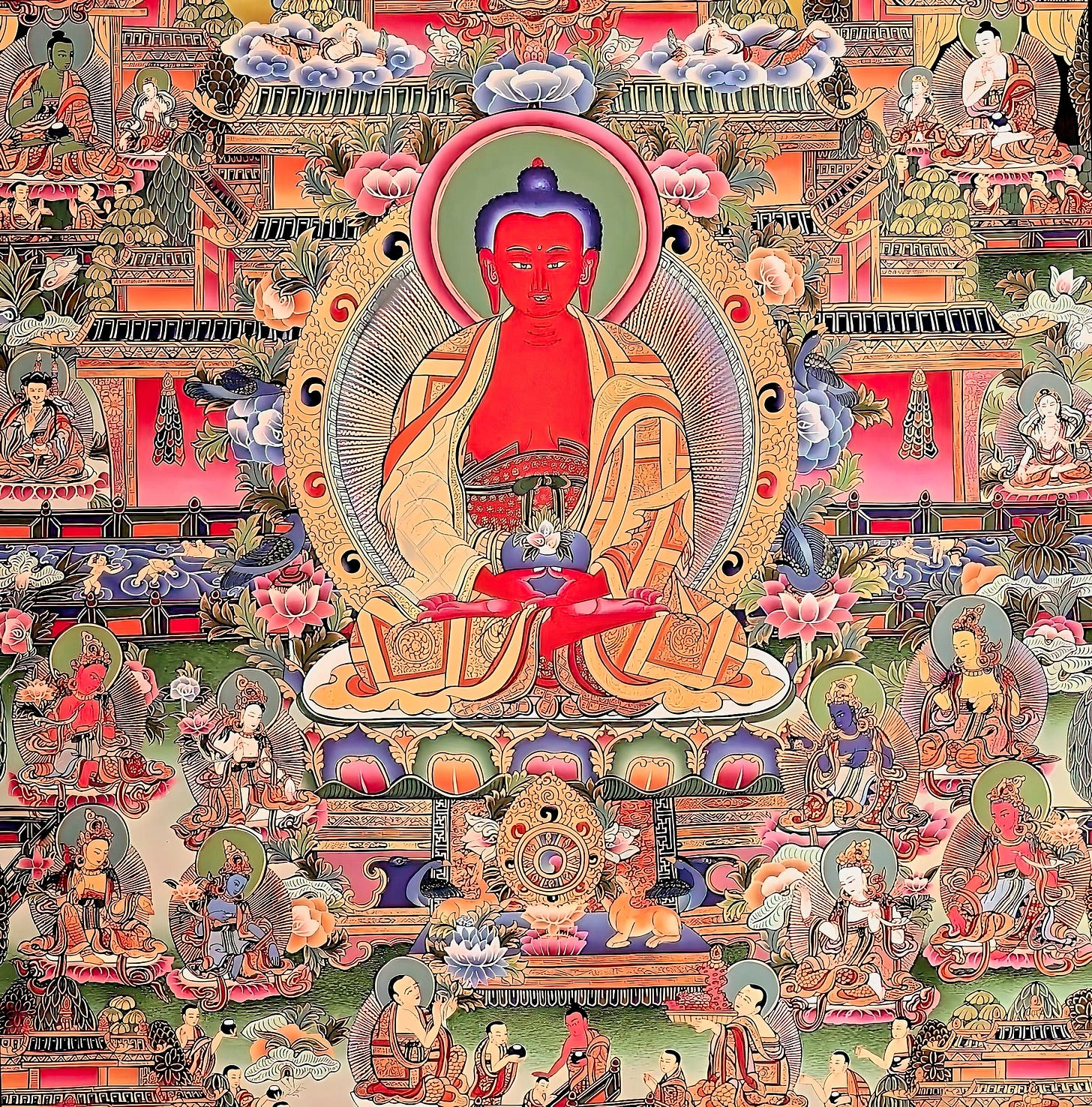Believing, Doubting, Kalpas, and Poison Arrows
Does it matter whether the Buddha took seven steps immediately after birth?
Modern science tells us that the universe as we know it began with the Big Bang singularity 13.8 billion years ago. It was then 9 billion years before our solar system, our moon, and the planet Earth formed and harbored the first single-celled forms of life.
So life as science defines it began about 4 billion years ago, and then more than 3.999 billion of those years went by before homo sapiens appeared. That was 315,000 years ago. Writing on clay tablets began 5,200 years ago (3,200 BCE), on papyrus 4,550 years ago (2,550 BCE), and on paper 1,900 years ago (100 CE).
Siddhartha Gautama, who would become the Buddha, was born around 500 BCE. When he traveled and taught, paper tablets and smartphones didn’t exist, papyrus wasn’t practical for recording his teachings, and memorization was the standard form of recording his sutras. After his teachings were recited over generations and written down hundreds of years later, they contained very little about his life.
Almost everything we understand about his life has come to us through stories told by others who were not alive when he was. Before we return to the mythology about the Buddha’s life, I’ll introduce the idea of a kalpa, which is Sanskrit for a hell of a long time, the period between the creation and recreation of a world. In Buddhism, just as people are reborn, so are worlds.
Without a smartphone to look it up, the Buddha didn’t speak of a Big Bang, so we don’t know precisely when the current kalpa began. We don’t know if it was the Big Bang, the formation of our solar system, or some other point, but he taught that there had been many and would be more. Some kalpas never have a fully realized buddha born, and some have more than one. The Buddha of our kalpa is the Gautama Buddha, also called Shakyamuni Buddha, because his parents were said to be royals of the Shakya clan.
The Cūḷamālukya Sutta is about a monk named Māluṅkyaputta who was troubled because the Buddha did not teach more about the nature of the cosmos or give definitive answers to other metaphysical questions. My quotations are from Bhikkhu Sujato’s translation.
If the Buddha knows that the cosmos is eternal, please tell me. If you know that the cosmos is not eternal, tell me. If you don’t know whether the cosmos is eternal or not, then it is straightforward to simply say: “I neither know nor see.”… If you know that…after death, a realized one still exists, or no longer exists, or both still exists and no longer exists, or neither still exists nor no longer exists, please tell me. If you don’t know any of these things, then it is straightforward to simply say: “I neither know nor see.”
The Buddha asked Māluṅkyaputta to imagine a man struck with a poisoned arrow whose friends urge him to find a healer to extract the arrow. What would happen if the man had this attitude:
“I won’t extract this arrow as long as I don’t know whether the man who wounded me was an aristocrat, a brahmin, a peasant, or a menial.…I won’t extract this arrow as long as I don’t know the following things about the man who wounded me: his name and clan; whether he’s tall, short, or medium; whether his skin is black, brown, or tawny; and what village, town, or city he comes from. I won’t extract this arrow as long as I don’t know whether the bow that wounded me was straight or recurved.”
The man would not get his answers and would die. The Buddha taught that ending suffering was the priority. We can’t afford to be consumed by (attached to) metaphysical questions before we remove the arrow of suffering.
I remember that sutra when questions arise about Buddhist mythology.
Did Siddhartha emerge from his mother’s side?
Did he take seven steps immediately after birth, with a lotus springing up under each?
Did he grow up behind his father’s palace walls and not encounter suffering until he ventured out as a young man?
Did he see first an ill person, then an old person, then a dead person, and finally a mendicant?
Exactly how long is a kalpa?
I could continue with thousands of questions, but the answer to them all is:
Does it matter if following the teachings helps end suffering in the world?
And this:
In our non-dual view, does it have to be one way or another?
I do my best to keep my mind on that last answer.
It informs my guru yoga. When I co-mediate with Buddha Amitabha and bring his essence into my own, I rest in a state of wisdom, clarity, peace, and loving-kindness. The more I invoke him, the more those qualities become a stable part of me. It doesn’t matter whether Amitabha exists outside and inside myself, or only inside, or whether it’s all a trick I do to influence my mind.
It is most likely all of the above, but does that matter? What matters is easing my suffering and the suffering of all beings.
From the Pure Land is read by subscribers in 22 US states and eight countries.
If you have found this blog post helpful, whatever your religious path, please share it with your friends.
Please stop and consider becoming a paid subscriber. You’ll receive the same short From the Pure Land posts, whichever option you choose. But by paying $5 a month or $50 a year if you can afford it, you’ll support my efforts to reduce the world’s suffering. In my gratitude, I’ll also send you occasional extended essays on more varied subjects.
There’s no need to watch this for the full hour, but it’s a beautifully chanted mantra to Amitabha.





